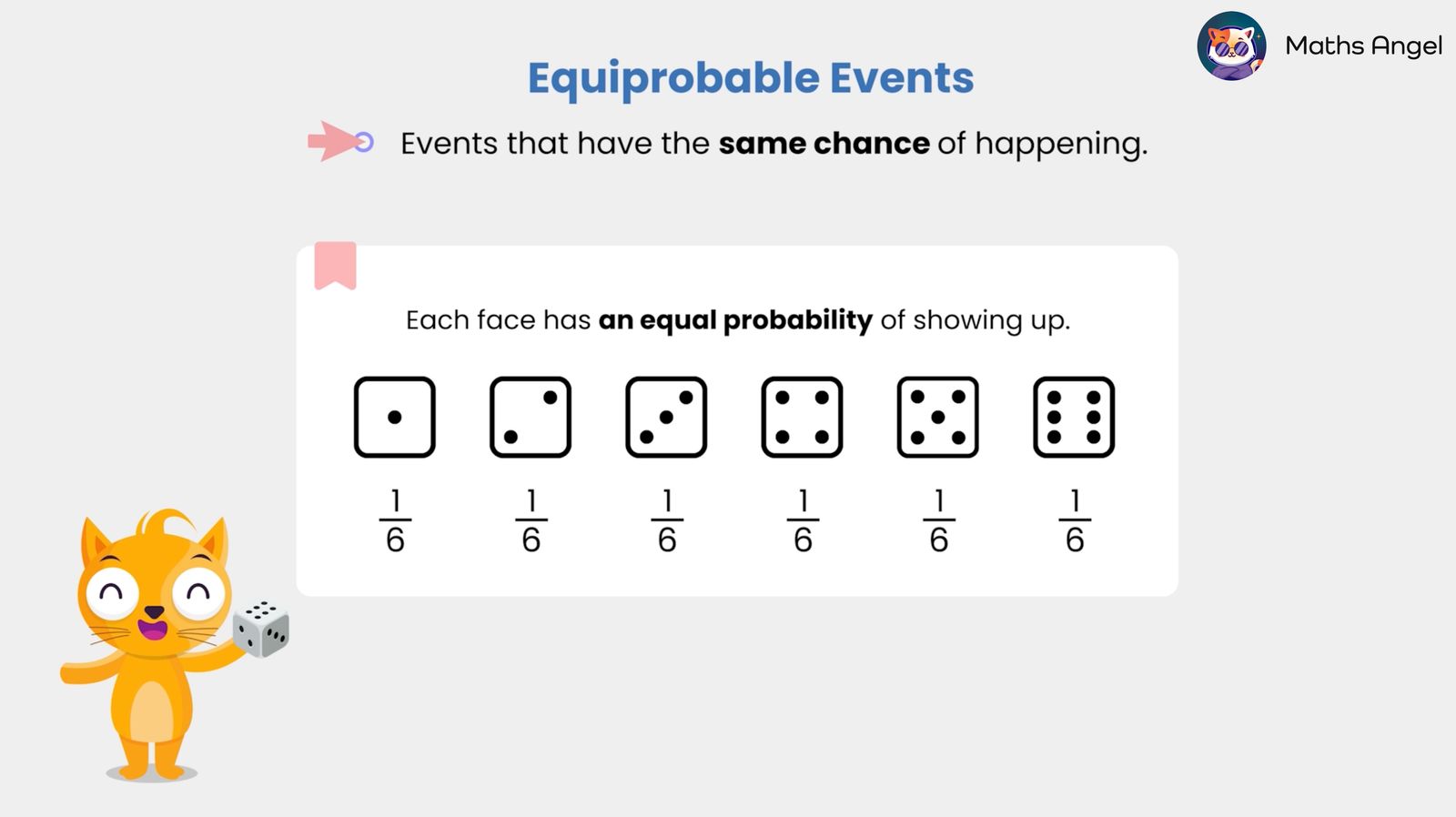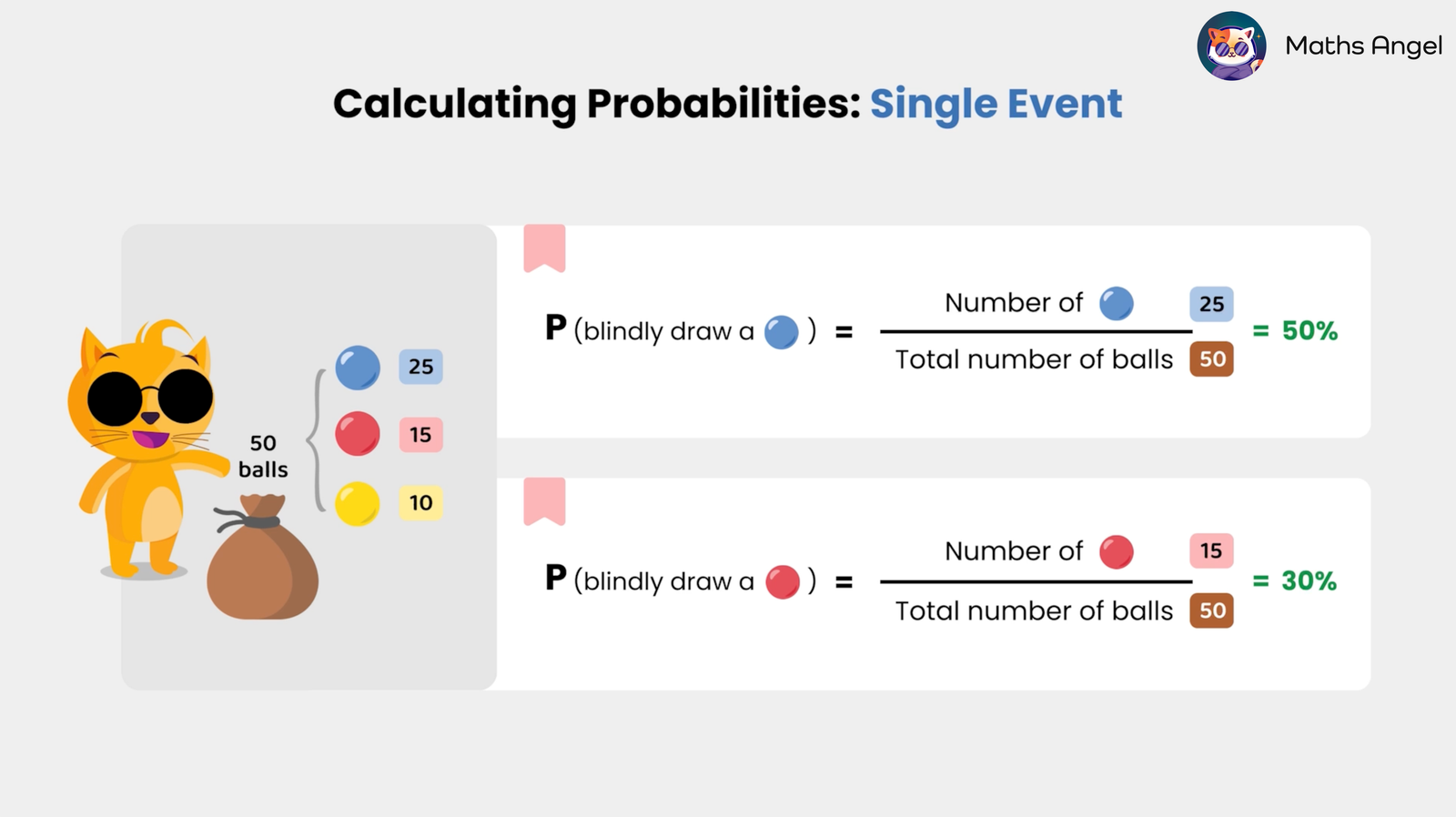{results_count} Math videos for {phrase}
Displaying {results_count} results of {results_count_total}
Addition Rule of Probability and Expected Frequency
🎬 Video Tutorial
(0:01) What are Equiprobable Events? Equiprobable events are events with equal chances of occurring. For example, when rolling a fair six-sided die, each face has a probability of $\frac{1}{6}$ of landing face-up.(0:25) How to Calculate the Probability of Single Events? Probability is found by dividing the number of favourable outcomes by the total number of possible outcomes. For example, if a bag contains 50 balls (25 blue, 15 red, and 10 yellow), the probability of randomly drawing a blue ball is $ \frac{25}{50} = 50\text{%} $, and the probability of drawing a red ball is $ \frac{15}{50} = 30\text{%} $.(1:32) What is the Addition Rule of Probability? When events are mutually exclusive (meaning they cannot happen at the same time), the probability of $A$ or $B$ is the sum of their individual probabilities. For example, the probability of drawing a blue or red ball is $ P(\text{Blue or Red}) = P(\text{Blue}) + P(\text{Red})$ = $50\text{%} + 30\text{%} = 80\text{%} $.(2:23) Understanding Expected Frequency: Expected absolute frequency tells us how often we expect an event to occur over a number of trials. For example, when rolling a fair six-sided die $60$ times, the probability of rolling a 3 is $ \frac{1}{6} $, so the expected frequency is $ \left( \frac{1}{6} \right) \times 60 = 10 $ times. However, since “expected” is just an estimation, actual results may vary.
📂 Revision Cards




🍪 Quiz
0%
🎩 AI Math Solver (ChatCat)
Need math help? Chat with our AI Math Solver at the bottom right!
0
0
votes
Article Rating
0 Comments
Newest
Oldest
Most Voted
Inline Feedbacks
View all comments

